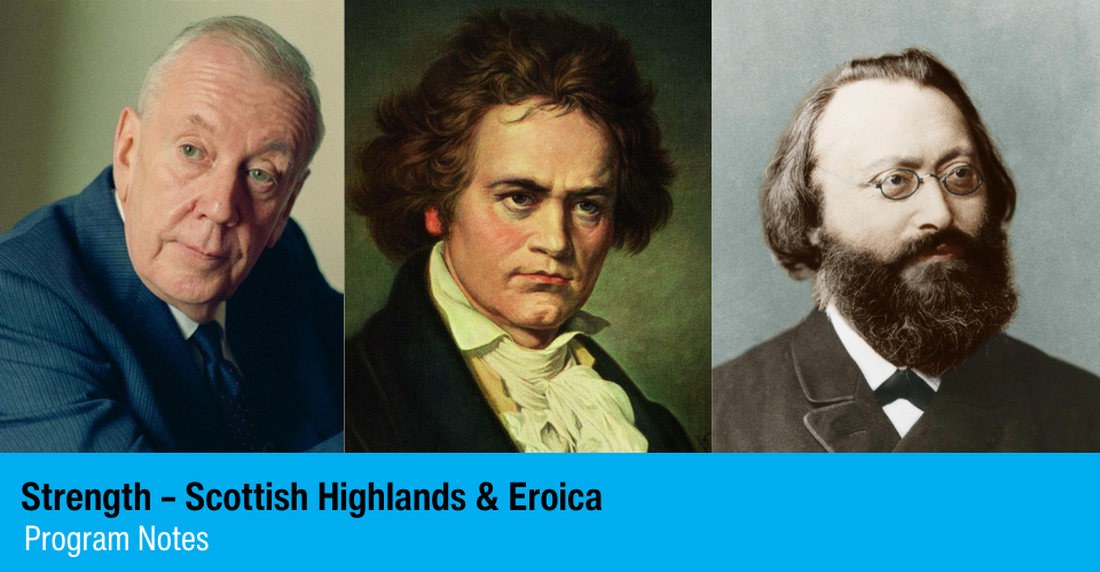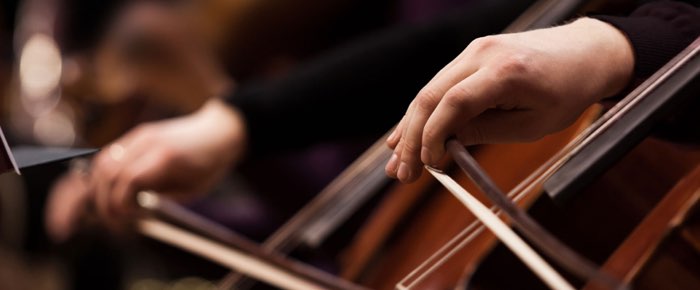30 SECOND NOTES: The British Isles are a treasure house of rich and varied musical traditions, and the music and spirit of Scotland inspired the first two works on this concert, both of which incorporate national melodies. The Four Scottish Dances of English composer, conductor and trumpeter Malcolm Arnold include a theme composed by Robert Burns and movements suggesting the River Spey and the rugged Hebrides Islands. German composer Max Bruch found inspiration for his Scottish Fantasy for Violin & Orchestra in several traditional songs and the books of Sir Walter Scott, whose bardic associations are reflected by the prominence of the harp in the work. The epochal Symphony No. 3, “Eroica” (“Heroic”) of Ludwig Van Beethoven, originally intended to honor Napoleon Bonaparte, expanded the scale and expressive power of the symphonic form and became the paragon — and the challenge — for the composers who followed. Johannes Brahms, during the twenty-year gestation of his First Symphony, lamented, “You have no idea how it feels to hear behind you the tramp of a giant like Beethoven.” 32nd Notes
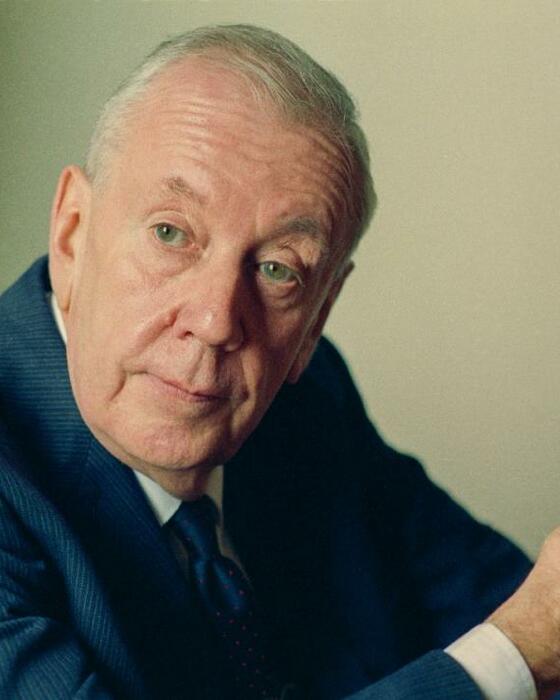
MALCOLM ARNOLD
Born October 21, 1921 in Northampton, England; died September 23, 2006 in London.
FOUR SCOTTISH DANCES, OP. 59
- First performed on June 8, 1957 in London, conducted by the composer.
- These concerts mark the first performances of this piece by the Des Moines Symphony.
(Duration: ca. 12 minutes)
Malcolm Arnold, one of England’s most talented and versatile musicians, was born in Northampton on October 21, 1921. He entered the Royal College of Music, London in 1938 as a scholarship student of Gordon Jacob in composition, Constant Lambert in conducting, and Ernest Hall in trumpet. In 1941, Arnold won the Cobbett Prize for Chamber Music Composition and joined the trumpet section of the London Philharmonic Orchestra; the following year he became Principal Trumpet of the LPO. After a stint in military service in 1944-1945 and a brief tenure with the BBC Symphony Orchestra, he returned to the LPO, where he came to be known as one of the country’s leading instrumental virtuosos for his performances of trumpet concertos by Haydn, Goedicke, Riisager, and others. In 1948, Arnold won the Mendelssohn Scholarship for study in Italy; he retired from the LPO that year to devote himself to composition and guest conducting. Much of his work during the years immediately following was for the cinema (he wrote some 120 film scores — Bridge on the River Kwai won an Academy Award in 1958; Inn of the Sixth Happiness, an Ivor Novello Award in 1959), but his later music ranges from opera and incidental music to orchestral, chamber and vocal compositions. His many distinctions included honorary degrees from the universities of Exeter, Durham and Leicester in England and Miami University of Ohio, and honorary fellowships in the RCM and the Royal Academy of Music. He was made a Commander of the British Empire in 1970, awarded the Honorary Freedom of the Borough of Northampton, his birthplace, in 1989, and knighted in 1993. Arnold died in London on September 23, 2006.
Of his Four Scottish Dances, Arnold wrote, “These Dances were composed early in 1957, and are dedicated to the BBC Light Music Festival. They are all based on my own melodies except for the first one, the theme of which was composed by Robert Burns. The first Dance is in the style of a slow strathspey, a dance in 4/4 meter with many dotted rhythms [long-short]. The name derives from the strath (valley) of the Spey, where the dance was practiced. The second Dance is a lively reel. The third Dance is in the style of a Hebridean song, and attempts to give an impression of the sea and mountain scenery on a calm summer’s day in the Hebrides. The last Dance is an energetic fling, which makes a great deal of use of the open strings of the violins.”
The score calls for piccolo, two flutes, two oboes, two clarinets, two bassoons, four horns, two trumpets, three trombones, timpani, bass drum, cymbals, snare drum, tam-tam, woodblock, harp and the usual strings consisting of first violins, second violins, violas, violoncellos and double basses.
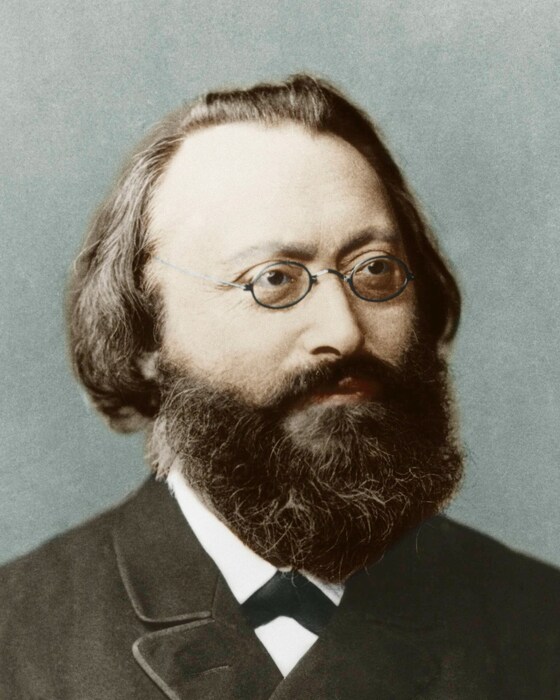
MAX BRUCH
Born January 6, 1838 In Cologne; died October 20, 1920 In Friedenau, near Berlin.
SCOTTISH FANTASY FOR VIOLIN & ORCHESTRA, OP. 46
First performed September 1880 in Hamburg, with Pablo de Sarasate as soloist.
- First performed by the Des Moines Symphony on May 12, 2001 with Joseph Giunta conducting and Benny Kim as soloist. One subsequent performance took place on October 19 and 20, 2013 conducted by Joseph Giunta with Fumiaki Miura as soloist.
(Duration: ca. 29 minutes)
Bruch, like many Romantic composers, was interested throughout his life in folk song. In 1863, he published twelve Scottish folk airs in four-part settings, and incorporated German, British and Hebrew traditional music into his works. (One of his best-known compositions is the Kol Nidrei for Cello & Orchestra, based on an ancient chant of the Hebrew ritual.) When Bruch was conductor of the Liverpool Philharmonic Society from 1878 to 1880, he took the opportunity to gather first-hand knowledge of Great Britain’s indigenous music, and, like Mendelssohn (one of the gods in Bruch’s musical pantheon), he was inspired by the music, lore and land of Scotland to produce one of his finest works — the Fantasy with Free Use of Scottish Airs for Violin & Orchestra.
In a letter to the publisher Simrock on July 30, 1880 explaining the work’s appellation, Bruch wrote, “The title ‘Fantasy’ is very general, and as a rule refers to a short piece rather than to one in several movements (all of which, moreover, are fully worked-out and developed). However, this work cannot properly be called a concerto because the form of the whole is so completely free, and because folk-melodies are used.” Abraham Veinus added, “Bruch operates freely with a set of Scottish folk melodies, distinguished, as such melodies are, by a wholesome simplicity and beauty. Grafted on to this is the kind of elaborate virtuoso technique that usually brings the house down. Bruch’s harmonic idiom and his orchestration technique run to juicy, well-rounded and solidly set sonorities.”
The Fantasy is in four movements rather than the concerto’s traditional three. The opening movement is divided almost equally between a solemn introduction and an elegant setting of the tune Auld Rob Morris. The music scholar Wilhelm Altmann, a Berlin friend of Bruch, said that the Fantasy had been inspired by the books of Sir Walter Scott. The prominence of the harp, with its bardic and folk associations, prompted Altmann to continue that this opening movement represents “an old bard who contemplates a ruined castle and laments the glorious times of old.” The vigorous second movement, subtitled Dance, is based on the song Hey, the Dusty Miller. Connecting passages resembling recitative lead without pause to the next movement, a richly bedecked version of the touching Scottish love ballad I’m a-doun for lack o’ Johnnie. The rousing finale uses the traditional war song Scots wha hae, which, according to legend, was sounded by Robert the Bruce at the Battle of Bannockburn in 1314.
The score calls for two flutes, two oboes, two clarinets, two bassoons, four horns, two trumpets, three trombones, tuba, timpani, bass drum, cymbals, harp and the usual strings.
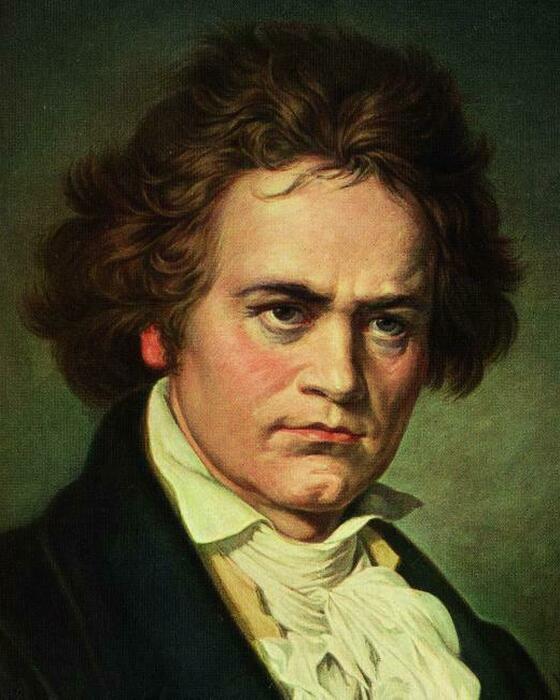
Ludwig van Beethoven
Born December 16, 1770 in Bonn; died March 26, 1827 in Vienna.
SYMPHONY NO. 3 IN E-FLAT MAJOR, OP. 55, “EROICA”
- First performed in December 1804 in Vienna, conducted by the composer.
- First performed by the Des Moines Symphony on October 14 & 15, 1978 with Yuri Krasnapolsky conducting. Four subsequent performances occurred, most recently on April 12 & 13, 2014 conducted by Joseph Giunta.
(Duration: ca. 50 minutes)
The year 1804 — the time Beethoven finished his Third Symphony — was crucial in the political history of Europe. Napoleon Bonaparte had begun his meteoric rise to power only a decade earlier, after playing a significant part in the recapture in 1793 of Toulon, a Mediterranean port that had been surrendered to the British by French royalists. Britain, along with Austria, Prussia, Holland and Spain, was a member of the First Coalition, an alliance that had been formed by those monarchial nations in the wake of the execution of Louis XVI to thwart the French National Convention’s ambition to spread revolution (and royal overthrow) throughout Europe. In 1796, Carnot entrusted the campaign against northern Italy, then dominated by Austria, to the young General Bonaparte, who won a stunning series of victories with an army that he had transformed from a demoralized, starving band into a military juggernaut. He returned to France in 1799 as First Consul of the newly established Consulate, and put in place measures to halt inflation, instituted a new legal code, and repaired relations with the Church. It was to this man, this great leader and potential savior of the masses from centuries of tyrannical political, social and economic oppression, that Beethoven intended to pay tribute in his majestic E-flat Symphony, begun in 1803. The name “Bonaparte” appears above that of the composer on the original title page.
Napoleon proclaimed himself Emperor of France in 1804 and was crowned, with the new Empress Josephine, at Notre Dame Cathedral on December 2nd, an event forever frozen in time by David’s magnificent canvas in the Louvre. Beethoven, enraged and feeling betrayed by this usurpation of power, roared at his student Ferdinand Ries, who brought him the news, “Then is he, too, only an ordinary human being?” The ragged hole in the title page of the score, now in the library of the Gesellschaft der Musikfreunde in Vienna, bears mute testimony to the violent manner in which Beethoven erased Napoleon from this Symphony. He later inscribed it, undoubtedly with much sorrow, “To celebrate the memory of a great man.”
The “Eroica” (“Heroic”) is a work that changed the course of music history. There was much sentiment at the turn of the 19th century that the expressive and technical possibilities of the symphonic genre had been exhausted by Haydn, Mozart, C.P.E. Bach and their contemporaries. It was Beethoven, and specifically this majestic Symphony, that threw wide the gates on the unprecedented artistic vistas that were to be explored for the rest of the 19th century. In a single giant leap, he invested the genre with the breadth and richness of emotional and architectonic expression that established the grand sweep that the word “symphonic” now connotes. For the first time, with this music, the master composer was recognized as an individual responding to a higher calling. No longer could the creative musician be considered a mere artisan in tones, producing pieces within the confines of the court or the church for specific occasions, much as a talented chef would dispense a hearty roast or a succulent torte. After Beethoven, the composer was regarded as a visionary — a special being lifted above mundane experience — who could guide benighted listeners to loftier planes of existence through his valued gifts. The modern conception of artists — what they do, their place in society, how they can affect those who experience their work — stems from Beethoven. Romanticism began with the “Eroica.”
The vast first movement opens with a brief summons of two mighty chords. At least four thematic ideas are presented in the exposition. The development is a massive essay progressing through many moods, all united by a titanic sense of struggle. It is in this central portion of the movement and in the lengthy coda that Beethoven broke through the boundaries of the 18th-century symphony to create a work not only longer in duration but also more profound in meaning. The beginning of the second movement — “Marcia funebre” (“Funeral March”) — with its simple, plaintive themes intoned over a mock drum-roll in the basses, is the touchstone for the expression of tragedy in instrumental music. A development-like section, full of remarkable contrapuntal complexities, is followed by a return of the simple opening threnody. The third movement is a lusty scherzo; the central section is a rousing trio for horns. The finale is a large set of variations on two themes, one of which (the first one heard) forms the bass line to the other. The second theme, introduced by the oboe, is a melody that also appears in the finale of Beethoven’s ballet The Creatures of Prometheus, Contradanse No. 7 and Variations and Fugue, Op. 35. The variations accumulate energy, and, just as it seems the movement is whirling toward its final climax, the music comes to a full stop before launching into an Andante section that explores first the tender and then the majestic possibilities of the themes. A brilliant Presto led by the horns concludes this epochal work.
The score calls for flutes, oboes, clarinets and bassoons in pairs, three horns, two trumpets, timpani and the usual strings.
